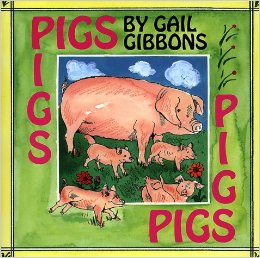Background Agricultural Connections
In the United States pigs are most commonly raised for their meat. Meat from a pig is called pork. Some pork, such as bacon and ham is processed by smoking the meat to add flavor. Sausage is pork meat that has been ground up and seasoned. Pork chops or roasts are considered fresh meats because they are not smoked or seasoned. Pork is a good source of protein and vitamins.
Pigs are part of the swine family. Male swine are called boars. Female swine are called sows. Baby pigs are called piglets or pigs. Once a pig reaches market weight (about 240 pounds) they are called hogs. It takes about 6 months for a baby pig to grow to market size.
A sow gives birth to a litter of pigs about twice per year. A litter usually has six to 12 baby pigs. During the first 3-5 weeks baby pigs are nourished by their mother's milk. Eventually they are weaned and eat corn, wheat and other grains.
There are many breeds of pigs around the world. In the United States common breeds include Duroc, Hampshire, Yorkshire, and Spots. The most obvious characteristics that distinguish breeds of pigs are their color and if their ears stand erect or if their ears are droopy. For example, the Yorkshire pig is white and it's ears stand erect. The Duroc pig is solid red (brown) in color and has large, droopy ears. The Hampshire is black with a white "belt" around it's shoulders. It has ears that stand erect. Spots is white with black spots and has large, droopy ears. 

